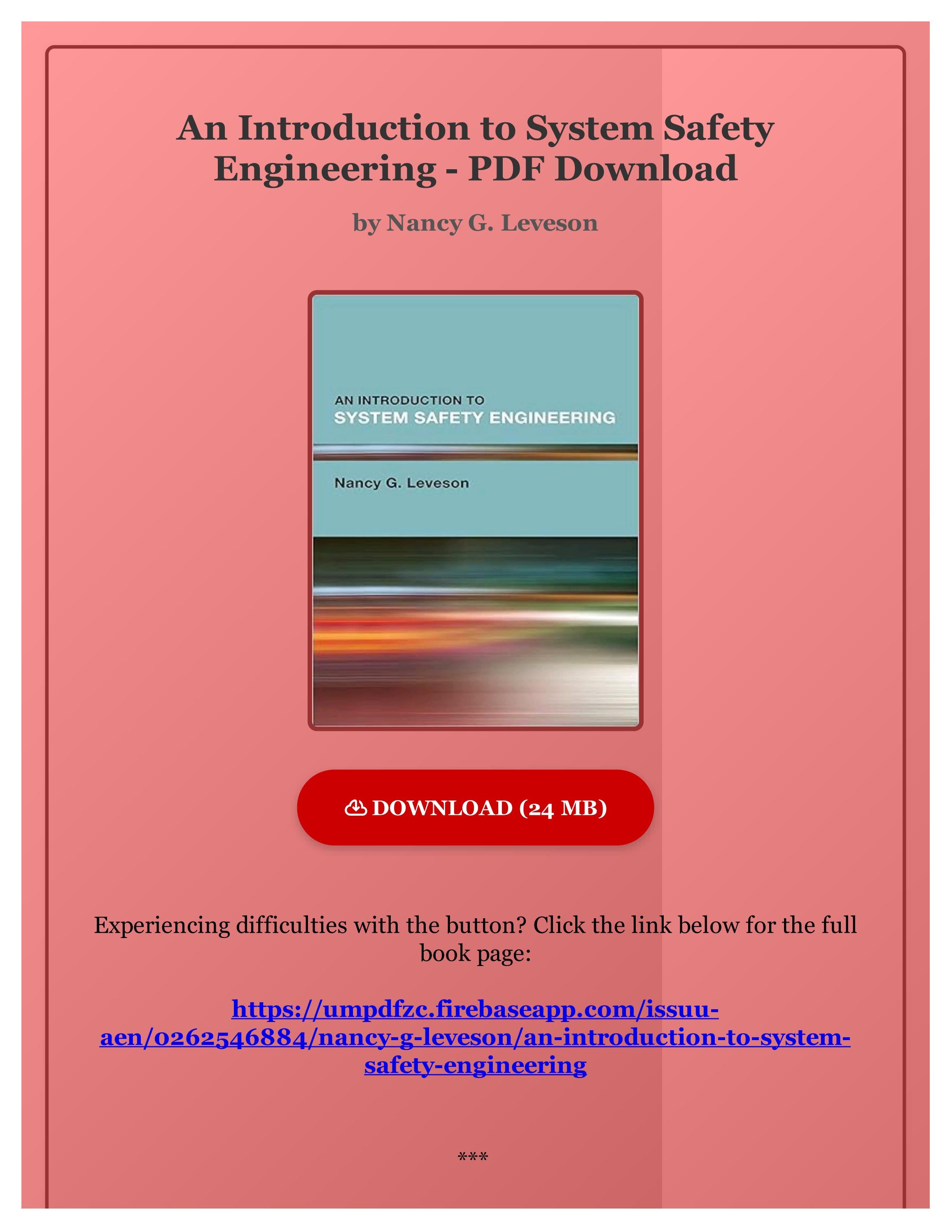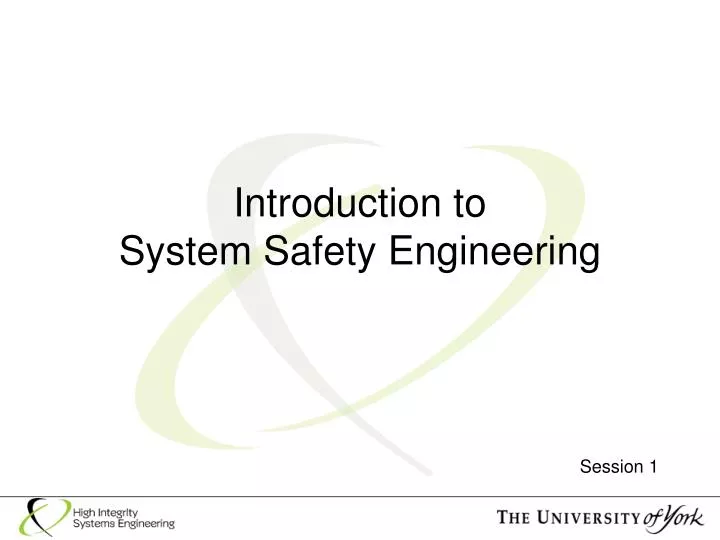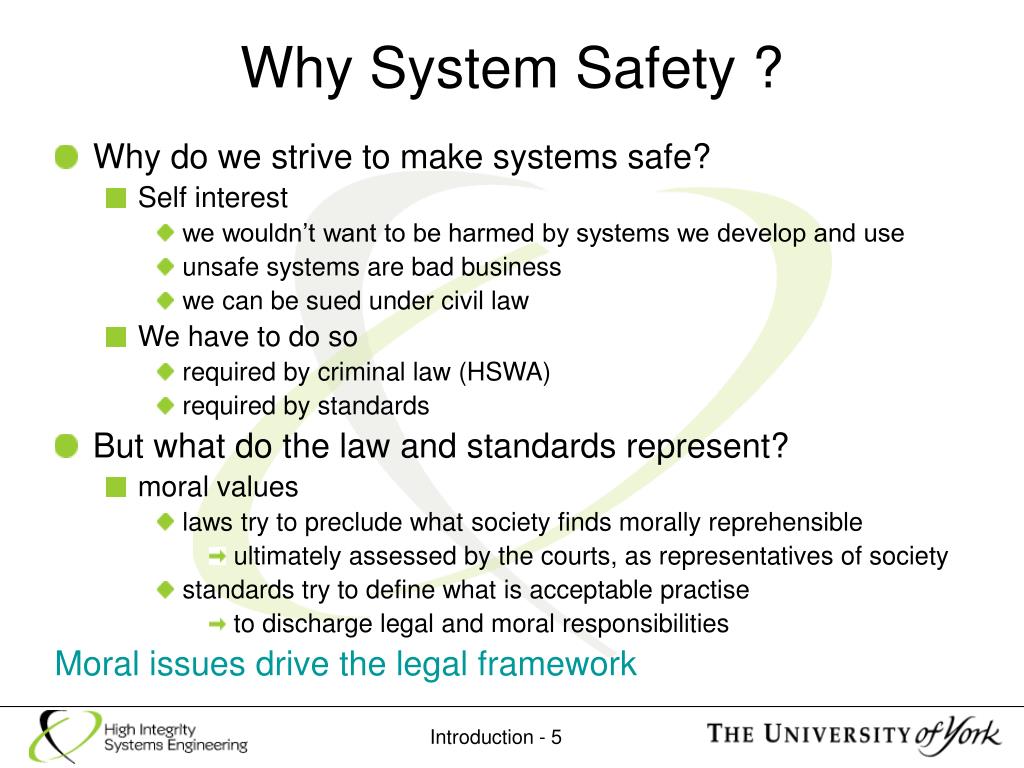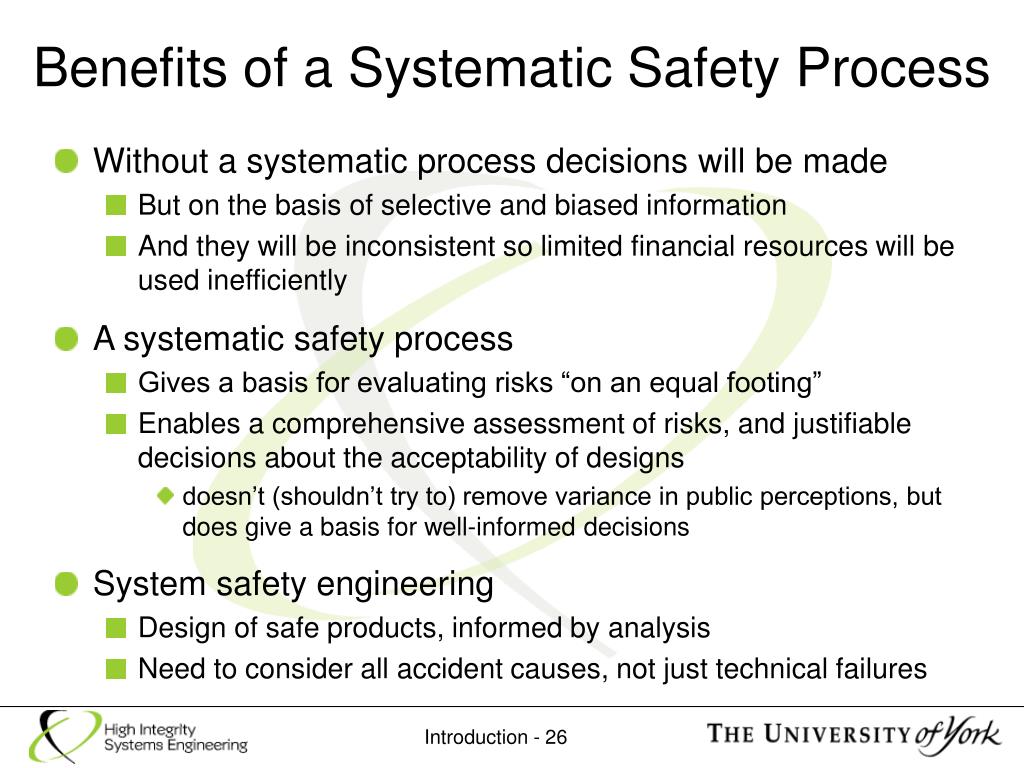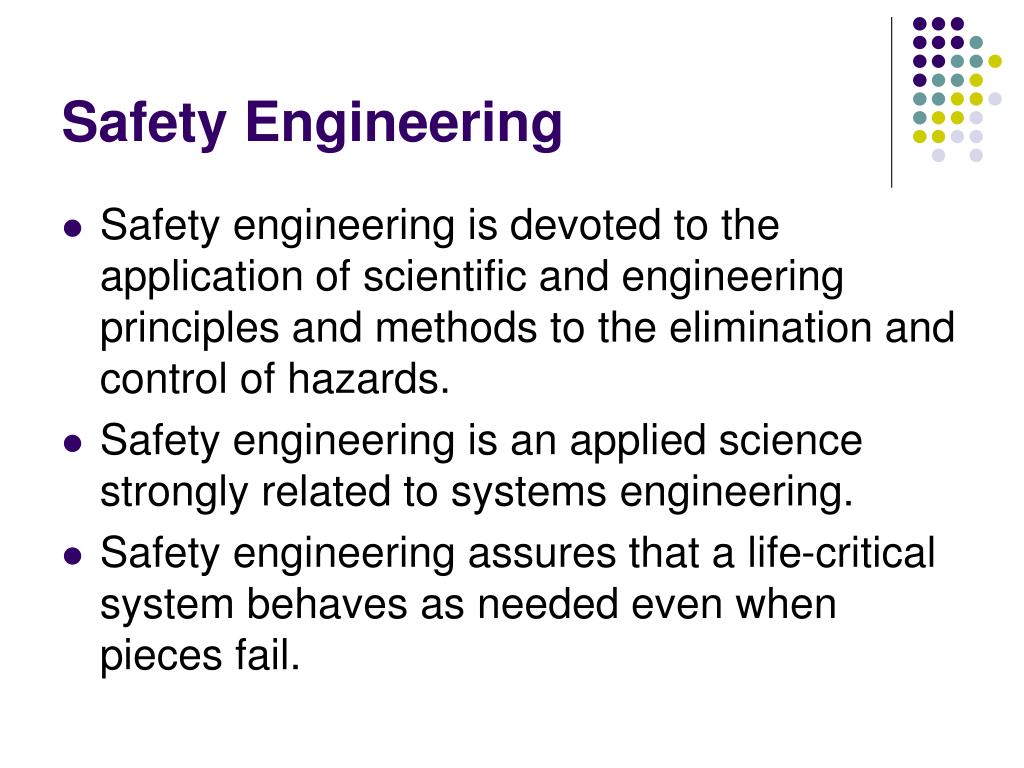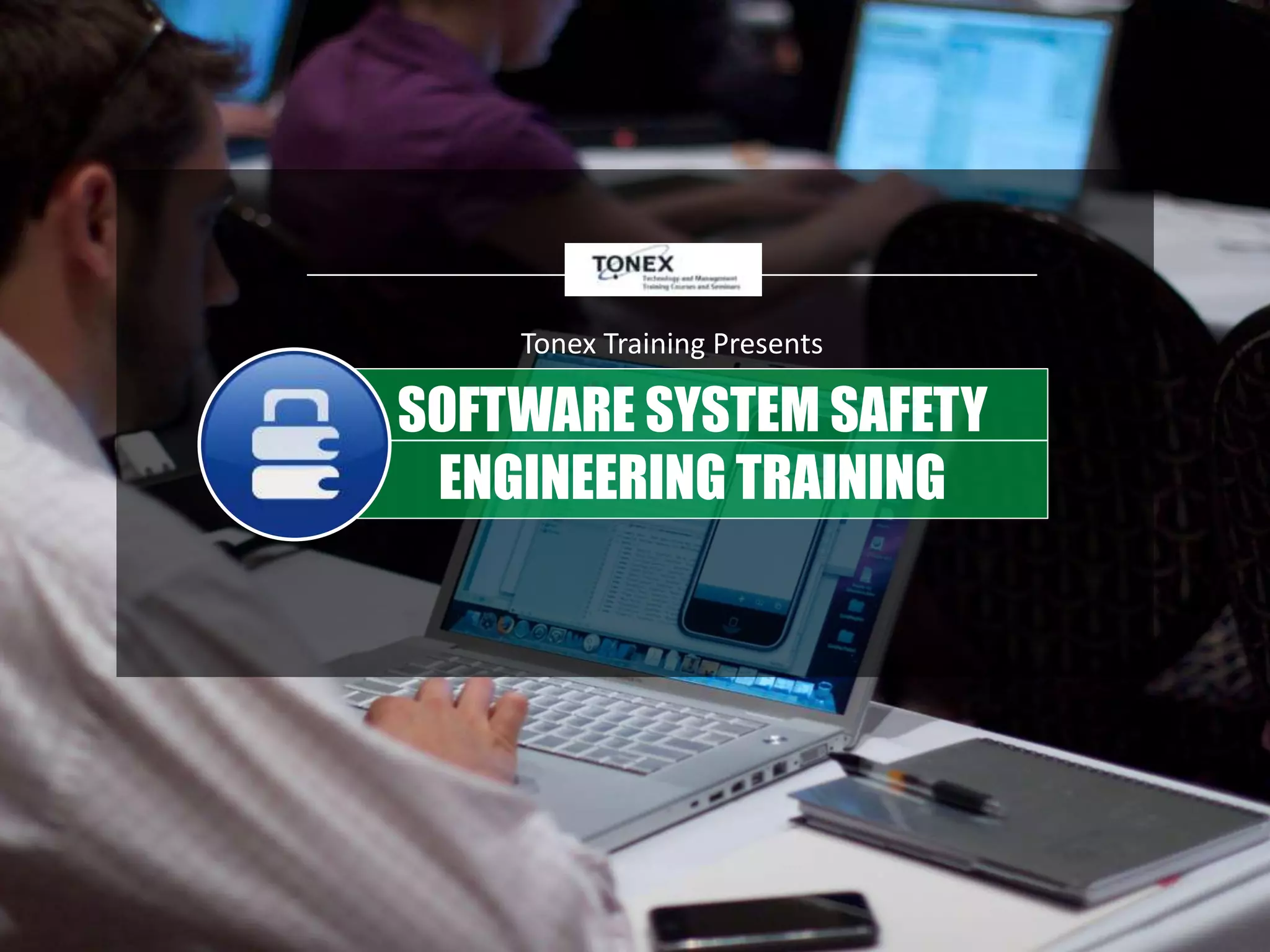An Introduction To System Safety Engineering

In a world increasingly reliant on complex technological systems, from aviation and healthcare to transportation and energy, the potential for catastrophic failure looms large. One overlooked error, one unforeseen interaction, can trigger a chain of events leading to devastating consequences. The discipline designed to prevent these disasters, System Safety Engineering, is rapidly gaining prominence as a critical safeguard against technological risk.
System Safety Engineering is not simply about fixing problems after they arise; it's a proactive, systematic approach to identifying, analyzing, and mitigating hazards throughout a system's lifecycle. This article delves into the core principles, methodologies, and growing importance of this crucial field. It examines how system safety engineers work to ensure that technological advancements benefit society without introducing unacceptable risks, examining the field's methodologies and future trajectory.
The Core Principles of System Safety
At its heart, System Safety Engineering is guided by the principle that safety must be designed into a system from its inception. This proactive approach shifts the focus from reactive mitigation to preventative design.
It requires a holistic understanding of the system, its operating environment, and the potential interactions between components and humans. This understanding is then used to identify potential hazards and develop strategies to eliminate or control them.
Hazard Identification and Analysis
The first step in any system safety program is hazard identification. This involves systematically examining all aspects of the system to identify potential sources of harm.
Techniques like Fault Tree Analysis (FTA) and Failure Modes and Effects Analysis (FMEA) are commonly employed. FTA is a top-down, deductive approach focusing on how a system failure can occur, while FMEA is a bottom-up, inductive approach focusing on the effects of individual component failures.
These analyses help engineers understand the causal relationships between component failures, system states, and potential hazards.
Risk Assessment and Mitigation
Once hazards have been identified, the next step is risk assessment. This involves evaluating the likelihood and severity of each hazard.
Risk is typically expressed as a function of probability and consequence. Quantitative risk assessment techniques may be used to assign numerical values to these parameters, allowing for a more objective comparison of different hazards.
Following risk assessment, mitigation strategies are developed to reduce the likelihood or severity of the identified hazards. This can involve eliminating the hazard altogether, reducing its probability of occurrence, or minimizing its potential consequences.
The System Safety Engineering Process
The System Safety Engineering process is iterative and continuous, spanning the entire lifecycle of a system, from initial concept to decommissioning. It is embedded within the broader systems engineering framework.
Initially, preliminary hazard analyses are performed during the conceptual design phase to identify potential safety issues early on. As the design evolves, more detailed hazard analyses are conducted to refine the understanding of risks and develop appropriate mitigation strategies.
Throughout the system's operational life, continuous monitoring and feedback are essential to ensure that the safety measures remain effective and that new hazards are identified and addressed.
The Role of Standards and Regulations
Standards and regulations play a crucial role in guiding System Safety Engineering practice. Various industries have developed specific standards that outline requirements for safety-critical systems.
For example, the aviation industry relies heavily on standards like ARP4761 and ARP4754A, which provide guidance on safety assessment and system development. Similarly, the nuclear power industry adheres to stringent regulations and standards developed by organizations like the International Atomic Energy Agency (IAEA).
Compliance with these standards and regulations is often mandatory for manufacturers and operators of safety-critical systems.
Challenges and Future Directions
Despite its importance, System Safety Engineering faces several challenges. One of the most significant is the increasing complexity of modern systems.
As systems become more interconnected and software-intensive, the potential for unforeseen interactions and emergent behaviors increases, making it more difficult to identify and mitigate hazards. Another challenge is the lack of standardized approaches for assessing the safety of artificial intelligence (AI)-enabled systems.
As AI becomes increasingly integrated into safety-critical applications, it is essential to develop robust methods for ensuring that these systems behave safely and predictably.
Looking ahead, the field of System Safety Engineering is likely to become even more critical as technological advancements continue to accelerate. Research efforts are underway to develop new tools and techniques for addressing the challenges of complex systems and emerging technologies. Model-Based Systems Engineering (MBSE) is gaining traction.
There is a growing emphasis on integrating safety considerations into the early stages of design, using techniques like formal methods and simulation to verify the correctness and safety of system behavior. The need for skilled system safety engineers is also expected to increase.
Educational institutions and professional organizations are working to develop training programs and certifications to meet this growing demand. The *System Safety Society* offers certifications and resources for professionals in the field.
Ultimately, System Safety Engineering is an investment in preventing catastrophic failures and ensuring the safety of society. By embracing a proactive and systematic approach to hazard management, we can harness the power of technology while minimizing the risks.
Its future lies in continued innovation, collaboration, and a commitment to safety above all else. The continued development and refinement of this vital discipline is crucial to maintaining trust in technology and fostering a safer, more resilient world.
